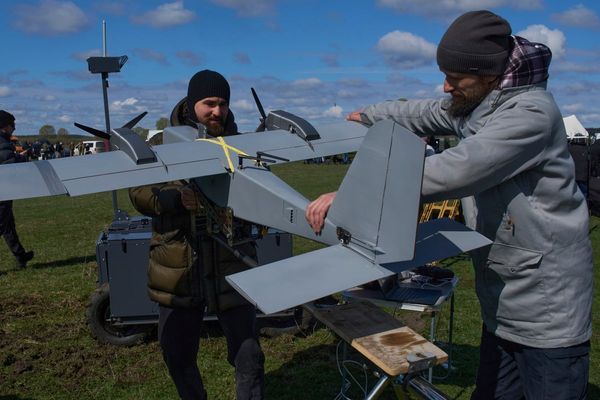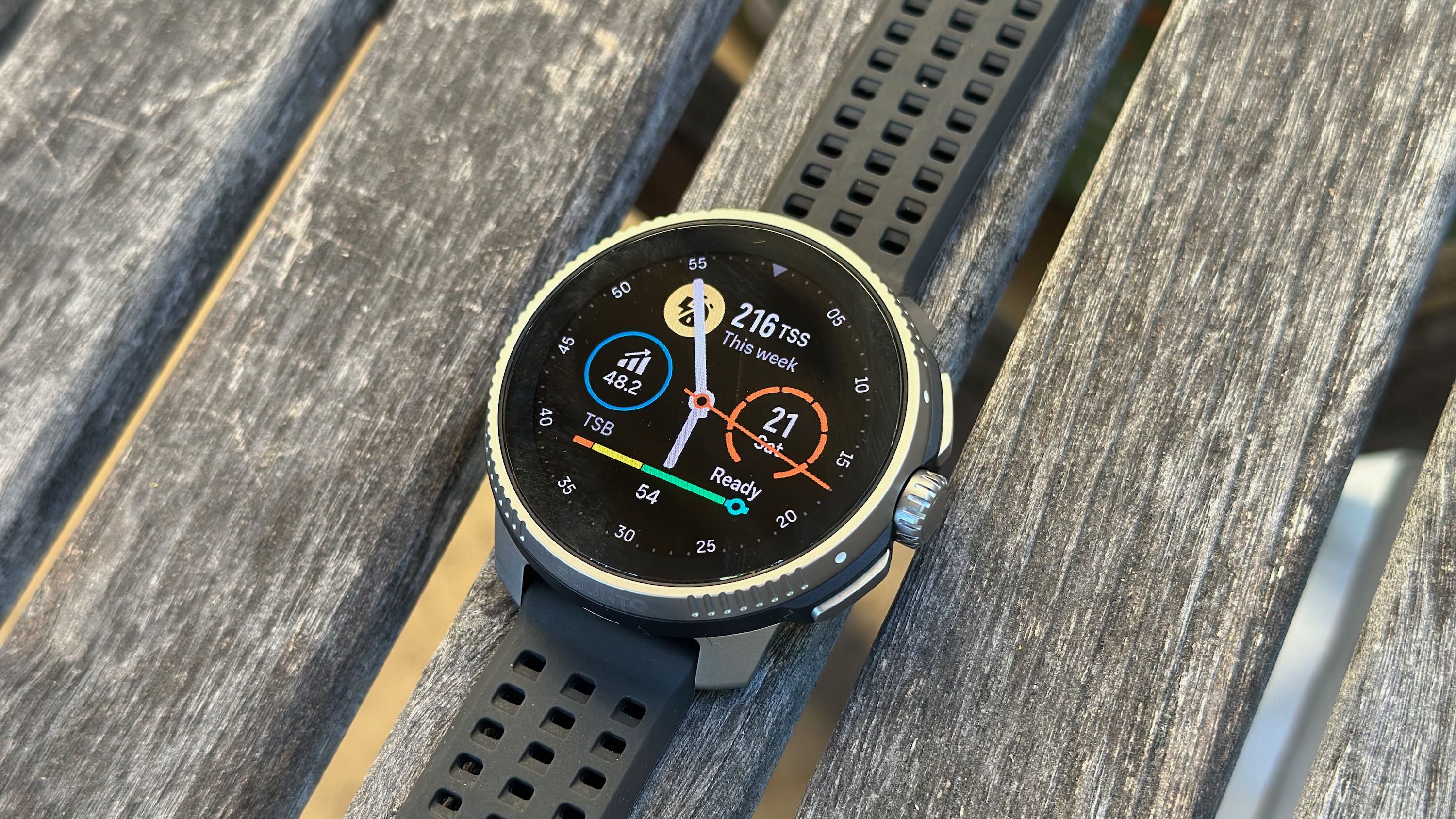
I received a Suunto Race review unit in mid-May, only for Suunto to release a newer Race S the following month with doubled heart rate LEDs, a lighter design, and few downgrades for $100 less. That, along with a bundle of Wear OS watches from Samsung, Google, and OnePlus to test all summer, put it on my back burner.
So yes, this Suunto Race review is nearly a year out of date from its late 2023 launch. It stayed in my mind, though, because it has most of the main ingredients I want in a modern running watch: a bright AMOLED display (sorry, MIP fans), a 16-day battery life, dual-band GPS, training load data borrowed straight from TrainingPeaks, downloadable topographic maps, and a unique app store for downloading niche training tools.
Once I found the time to put it through its paces, the Suunto Race software — particularly its SuuntoPlus apps — took a long time to master, but it rewards you for the effort. Perhaps my biggest issue with the Suunto Race is with the fundamentals: when I tested its HR and GPS accuracy, they didn't quite live up to my expectations.
That said, this is a very strong watch for the $450 price range, giving the equally-priced Garmin Forerunner 265 and COROS APEX 2 Pro a run for your money.
Suunto Race review: Price, availability, and specs
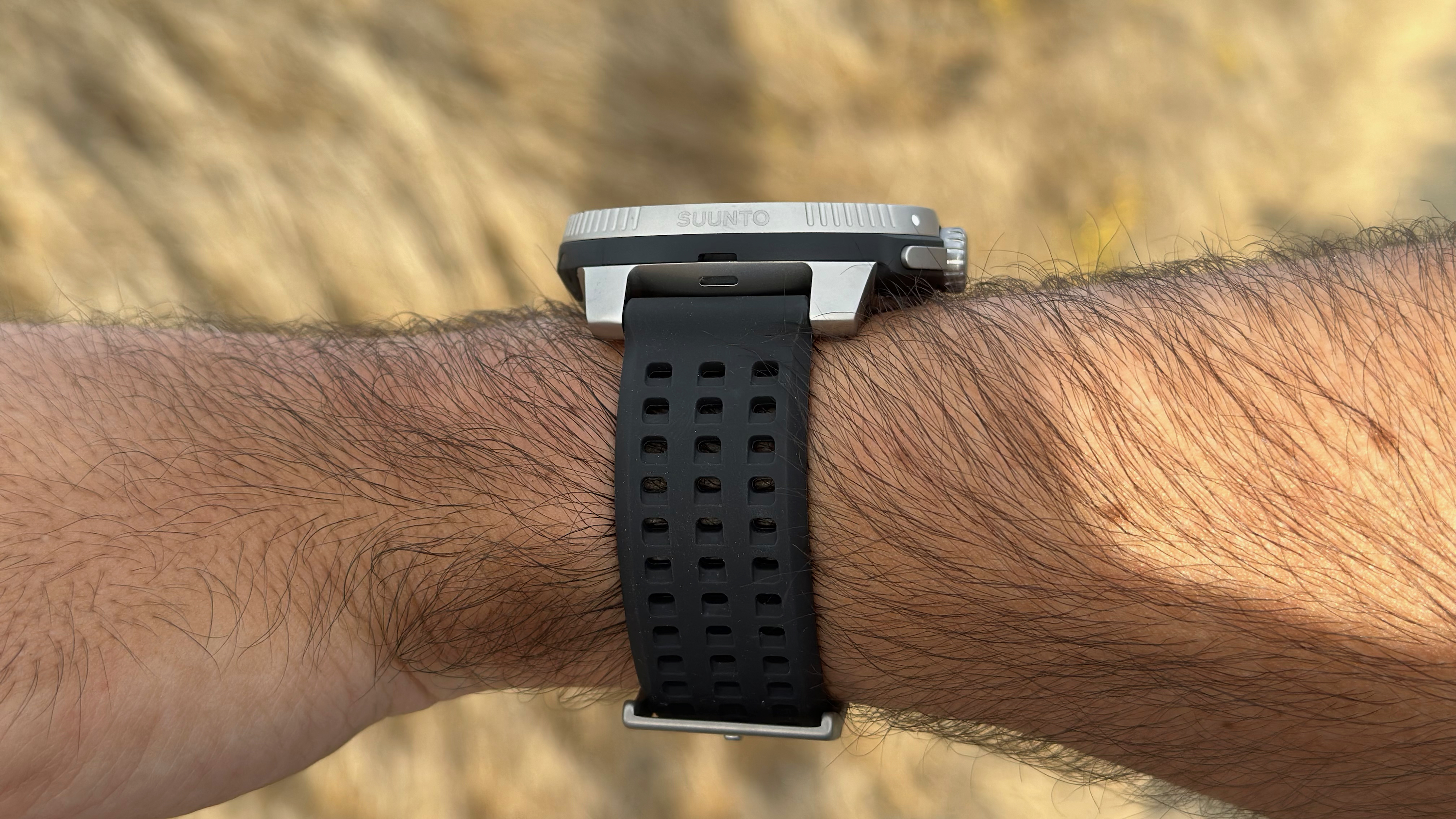
The Suunto Race was released in October 2023. The newer Race S launched in June 2024, adding a few new software features that also arrived on the Suunto Race.
It starts at $449 for the stainless steel version and $549 for the titanium version, which weighs slightly less and has double the map storage space. The steel versions ship in All Black, Midnight Blue, Birch White, and "UTMB World Series," which has a black case and unique strap. The titanium edition ships in Charcoal and Amethyst.
Suunto Race review: What you'll like
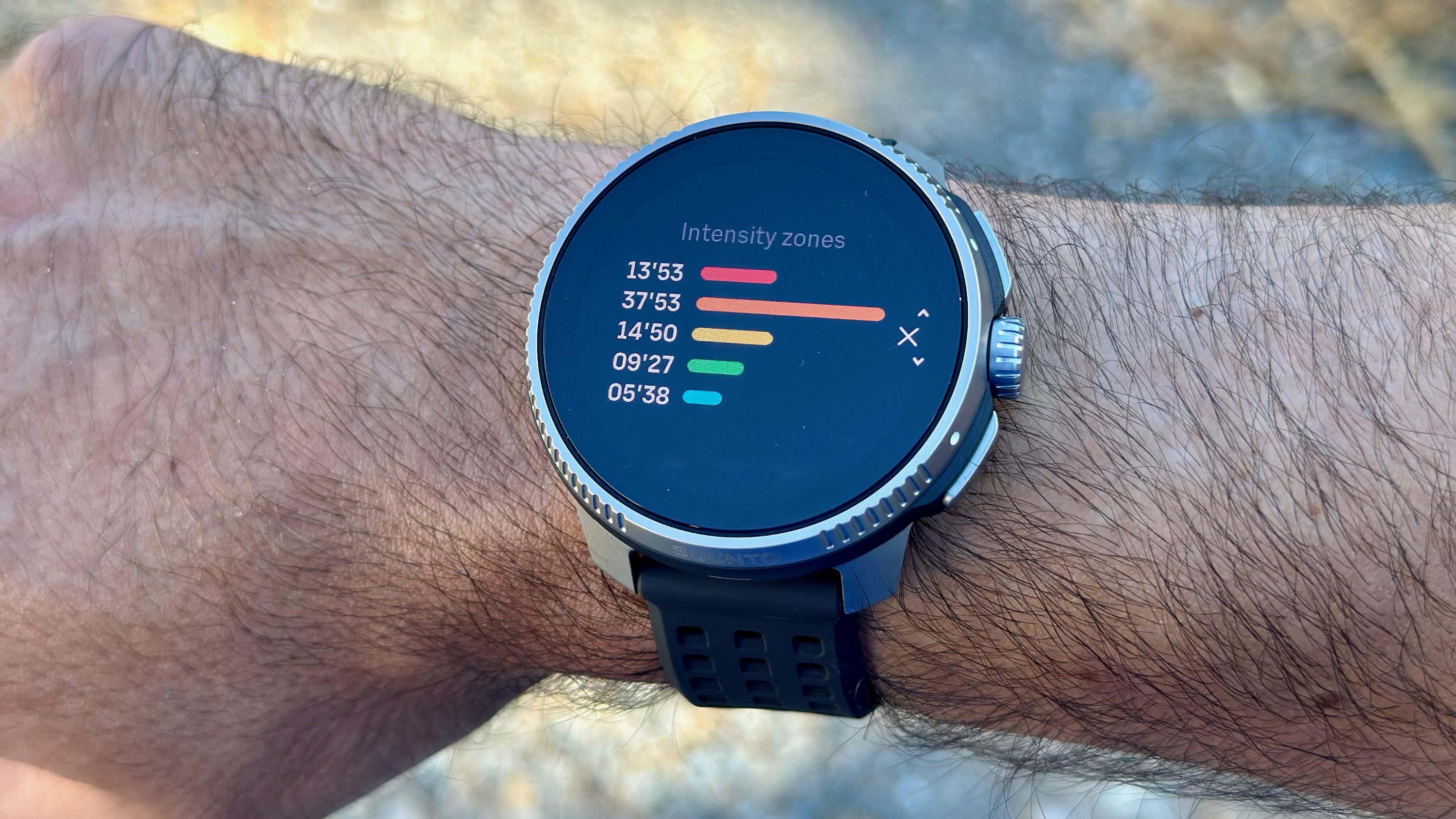
Most fitness watch brands are transitioning from MIP to AMOLED displays, and the Suunto Race is exhibit A for why it's a good thing. You're getting a watch that lasts over two weeks per charge or about 40 hours, using four satellite systems and dual-band GPS simultaneously, and still getting a 1,000-nit, high-res display. I don't begrudge people who need max battery life like the 90-day Garmin Enduro 3, but I'd say the Suunto Race has hit the good-enough threshold for most athletes.
The Suunto Race uses a rotating crown and start/back buttons, giving you three customizable shortcuts for the crown press and top/down long-presses. You can prioritize functions like the flashlight, music controls, notifications, alarms, or weather. The crown shortcut highlights one pinned widget, so you can jump quickly to data like your training progress widget or workout logbook, or open the compass or map quickly.
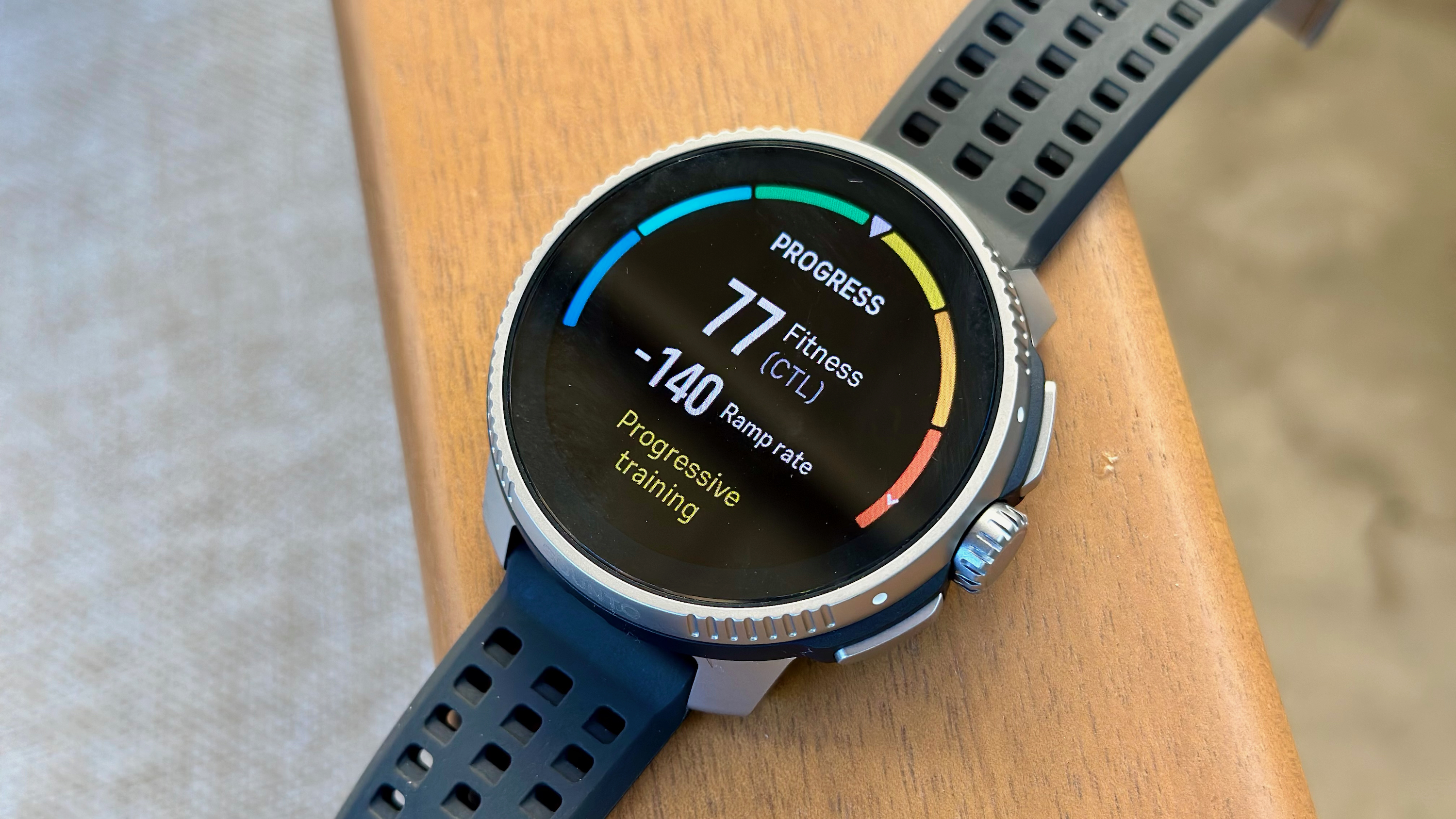
The Suunto app splits off between a Home feed of your workouts, a Calendar view, a Training Zone — which summarizes your recent Training Load, Intensity, Impact, and Recovery — and a map view with heat maps that show where Suunto users train. Unlike other apps that put more focus on health, sleep, paid coaching, or tie-ins to other products, Suunto keeps things focused on training, which I appreciate.
In particular, the Training Zone section is pretty neat. You get a Suunto Coach text summary that clearly describes your recent progress, before you dive into the charts and numbers. You see a weekly summary of your training load and training stress (aka intensity) that's compared against your chronic training load for a form (Training Stress Balance) score. It all may sound complicated at first, but once you memorize the acronyms, it provides a ton of useful context for serious runners.
I especially like how Suunto provides an Intensity chart that shows how much time you spend in HR zones 1–5 across the week, as well as pace zones and running power zones. I wrote about wanting better training load zone analysis recently, and Suunto checks many of those boxes.
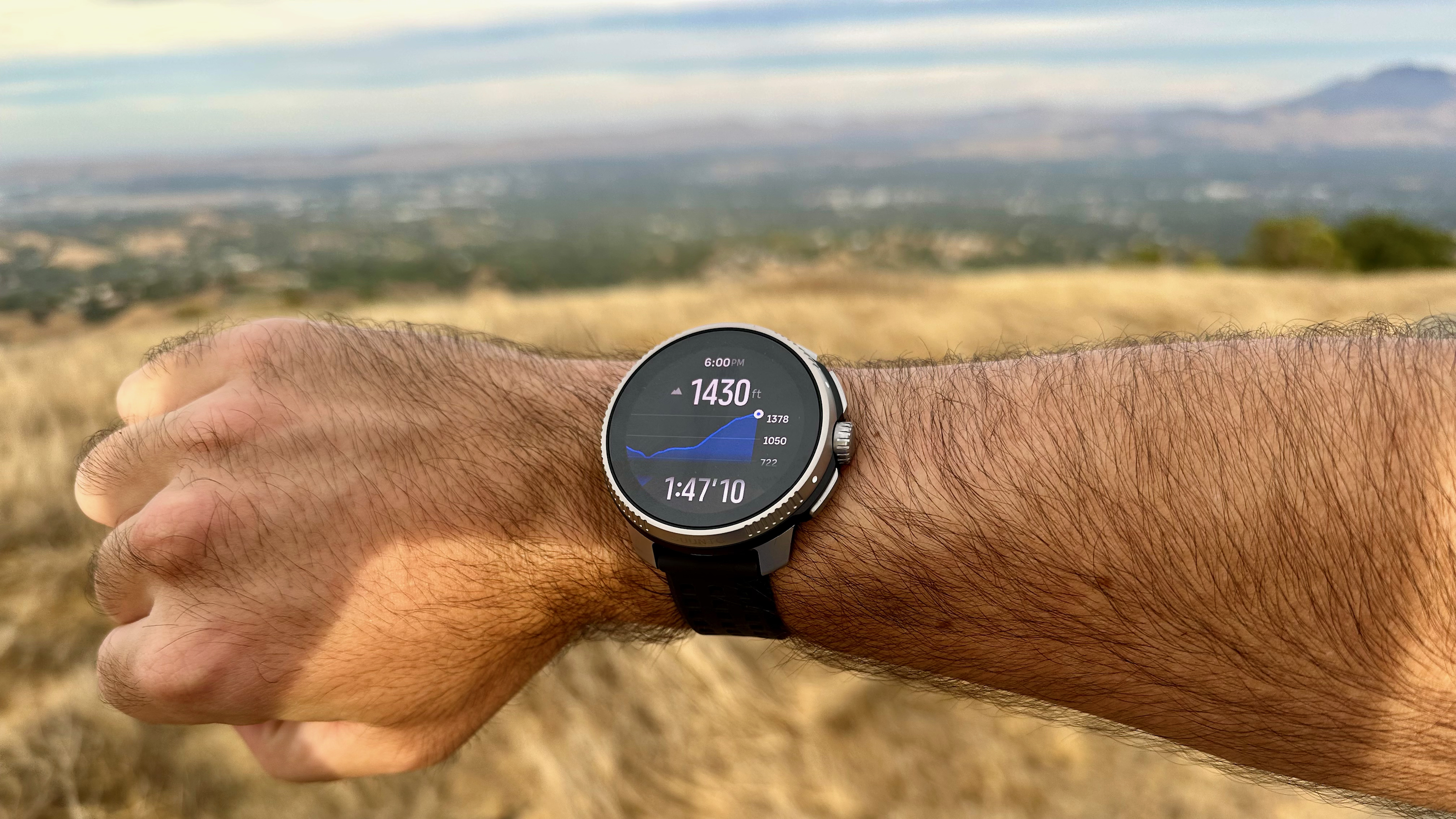
You can download offline maps across hundreds of countries and territories, with the maps split up for the larger countries. In the U.S., for example, I downloaded Northern California (2GB), but most other states (and many countries) are smaller. Most people will be able to make do with the standard 16GB of storage unless you frequently travel for training; downloading maps is painfully slow, so you're not going to want to swap map packs often.
Next you can create a route, either by using the simple map creation tool and tapping waypoints or importing a GPX file from third-party apps like Strava. You can also find other people's public routes using heatmaps, though you may not find many except in major population areas or national parks. Uploading them to your watch is quick and managing your route library is painless.
Speaking of third-party integrations, Suunto offers plenty of SuuntoPlus apps made by third-party tech brands or community members, filling the gaps left behind in Suunto's software. You can add SuuntoPlus apps on the watch itself, naturally integrating the new tech into your favorite sports modes. They also let you sync with certain devices, including the CORE Body Temp sensor I tested earlier this year.
Suunto Race review: HR and GPS accuracy
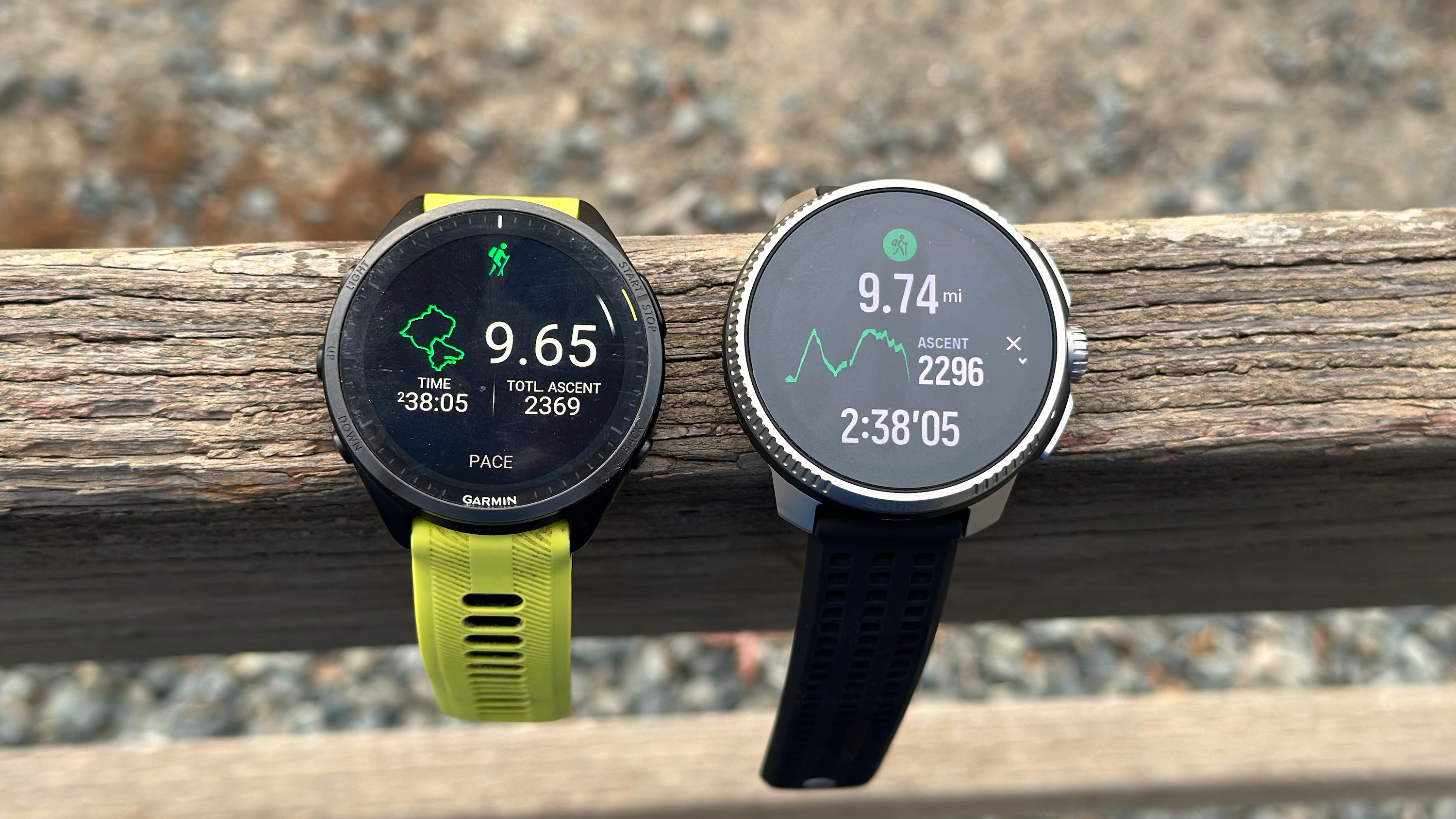
Suunto Race GPS accuracy tests
For GPS accuracy, I use my Garmin Forerunner 965, which beat other dual-band GPS watches from COROS, Polar, Samsung, and Apple in previous tests. For testing optical HR accuracy, I use my COROS Heart Rate Monitor, which compared favorably against a HRM chest strap.
At the end of multiple runs and a long hike, the Suunto Race added at least one-tenth of a mile to each activity compared to what my Garmin Forerunner 965 tracked. Given how well the latter usually does for dual-band GPS accuracy, that had me worried about the Suunto Race's own accuracy. Analyzing the charts, though, the answer is a little more complicated.
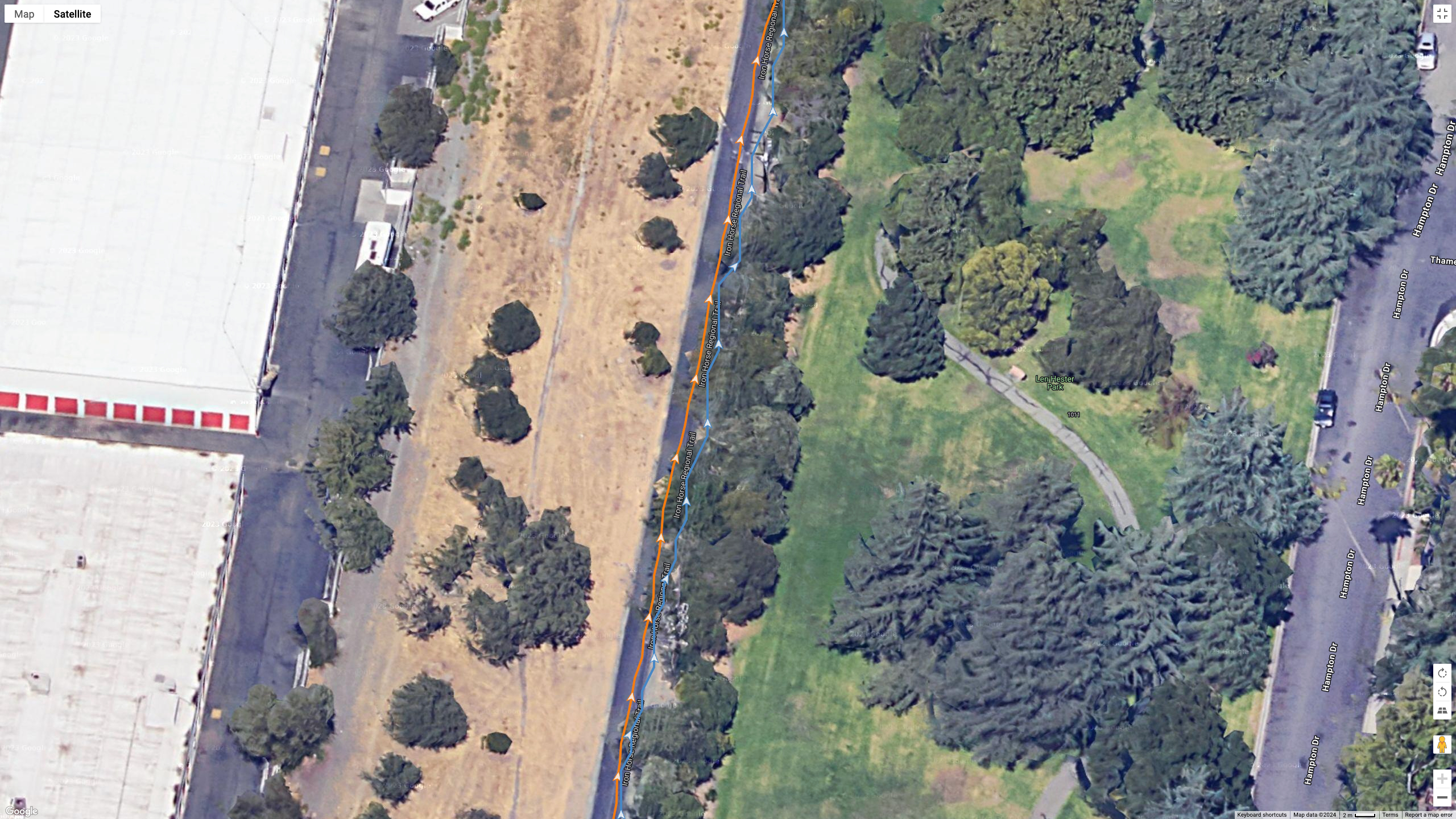
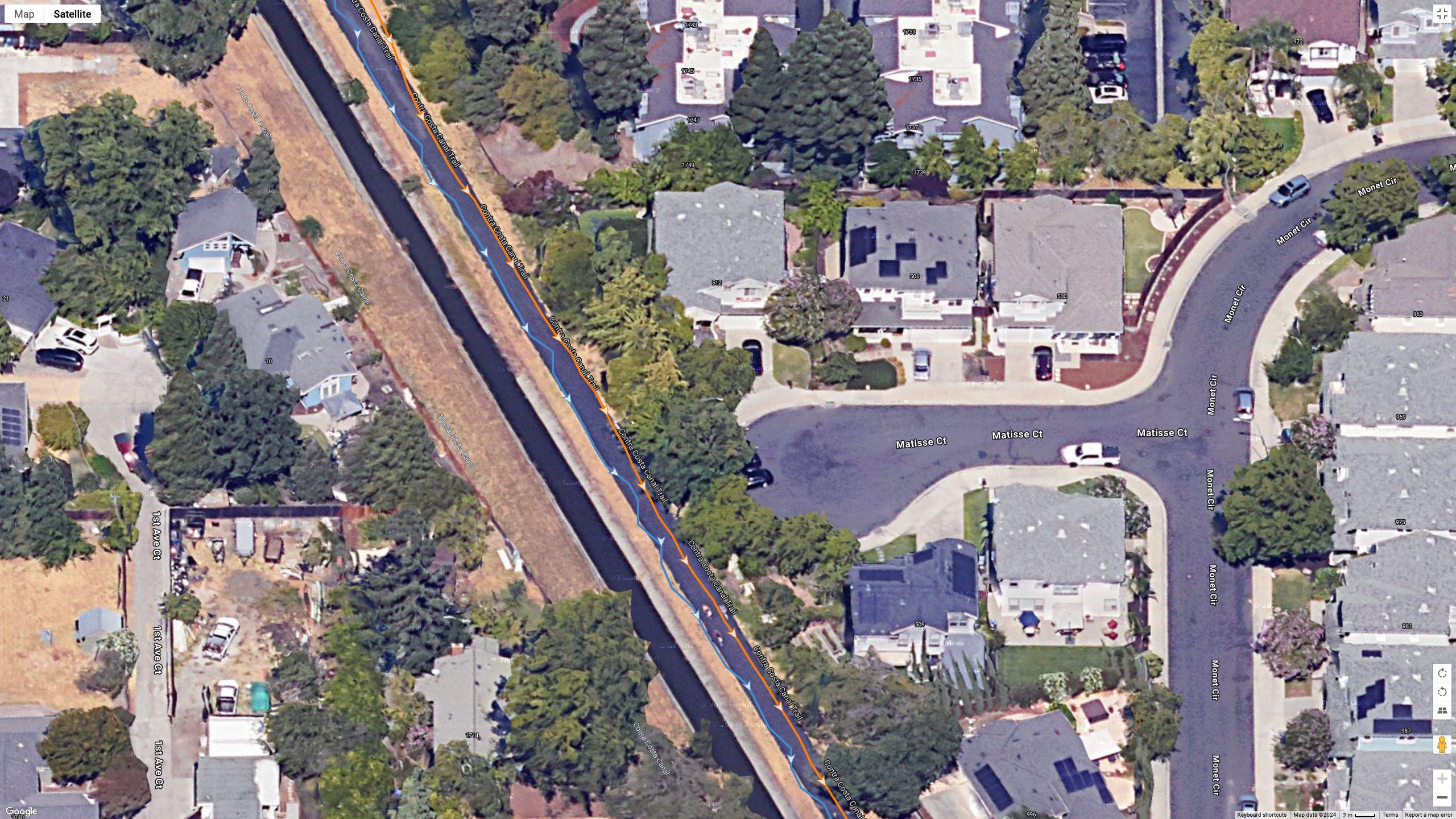
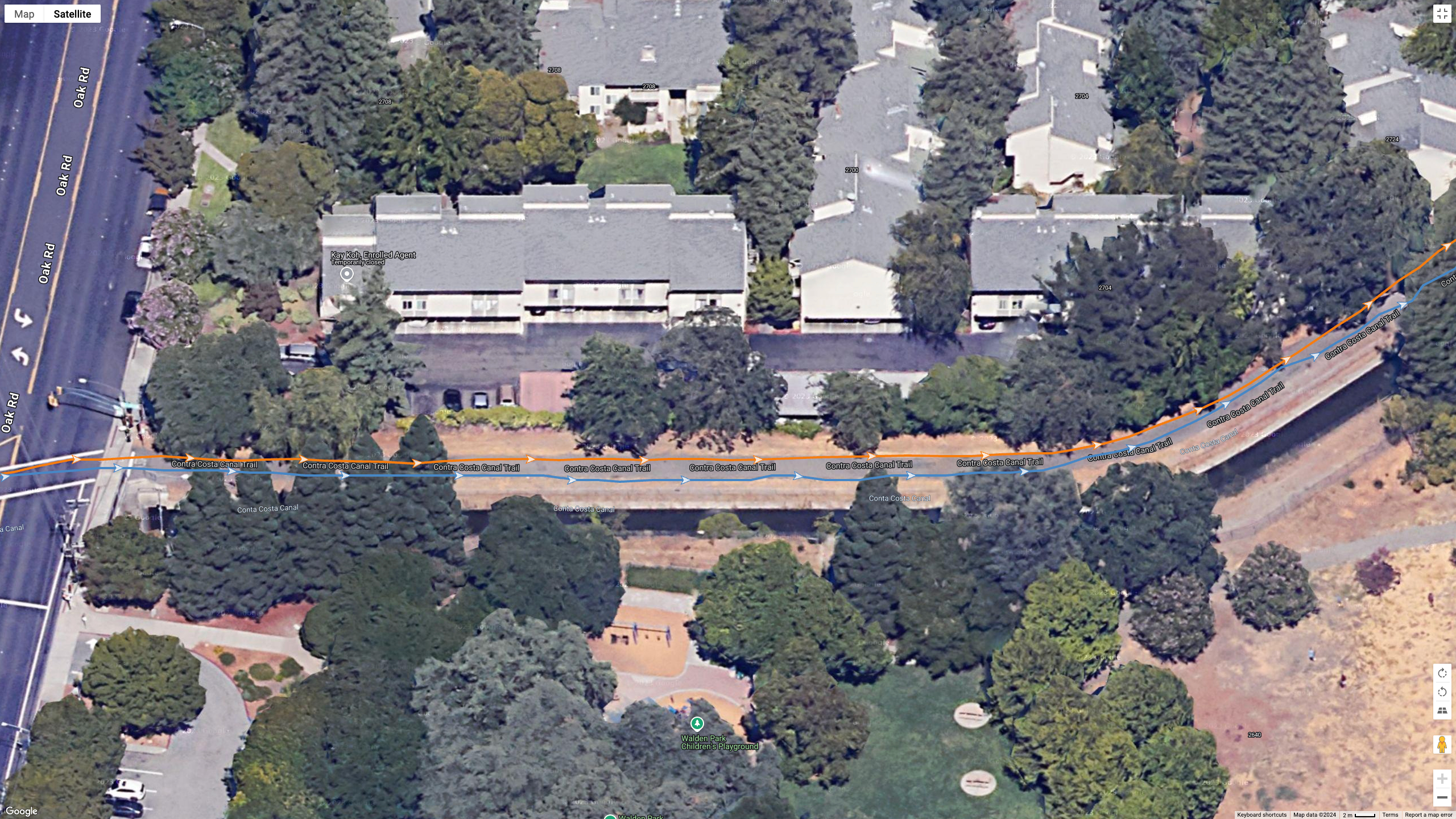
In each of the GPS paths above, the Suunto Race (blue line) generally matches my location, sometimes doing better than Garmin (orange) at knowing which side of the trail I'm on. The immediately obvious problem is how every one-second reading seems to fling me from one diagonal to another, like I'm a running back practicing my juking skills.
I'm still moving forward and avoiding the drastic tracking issues I see with GPS-only watches like the Pixel Watch 3; I don't want to give the impression that Suunto does terribly here. But without fail, after every mile Suunto is an extra one-hundredth of a mile ahead of Garmin, and by the end of a long workout the gap adds up.
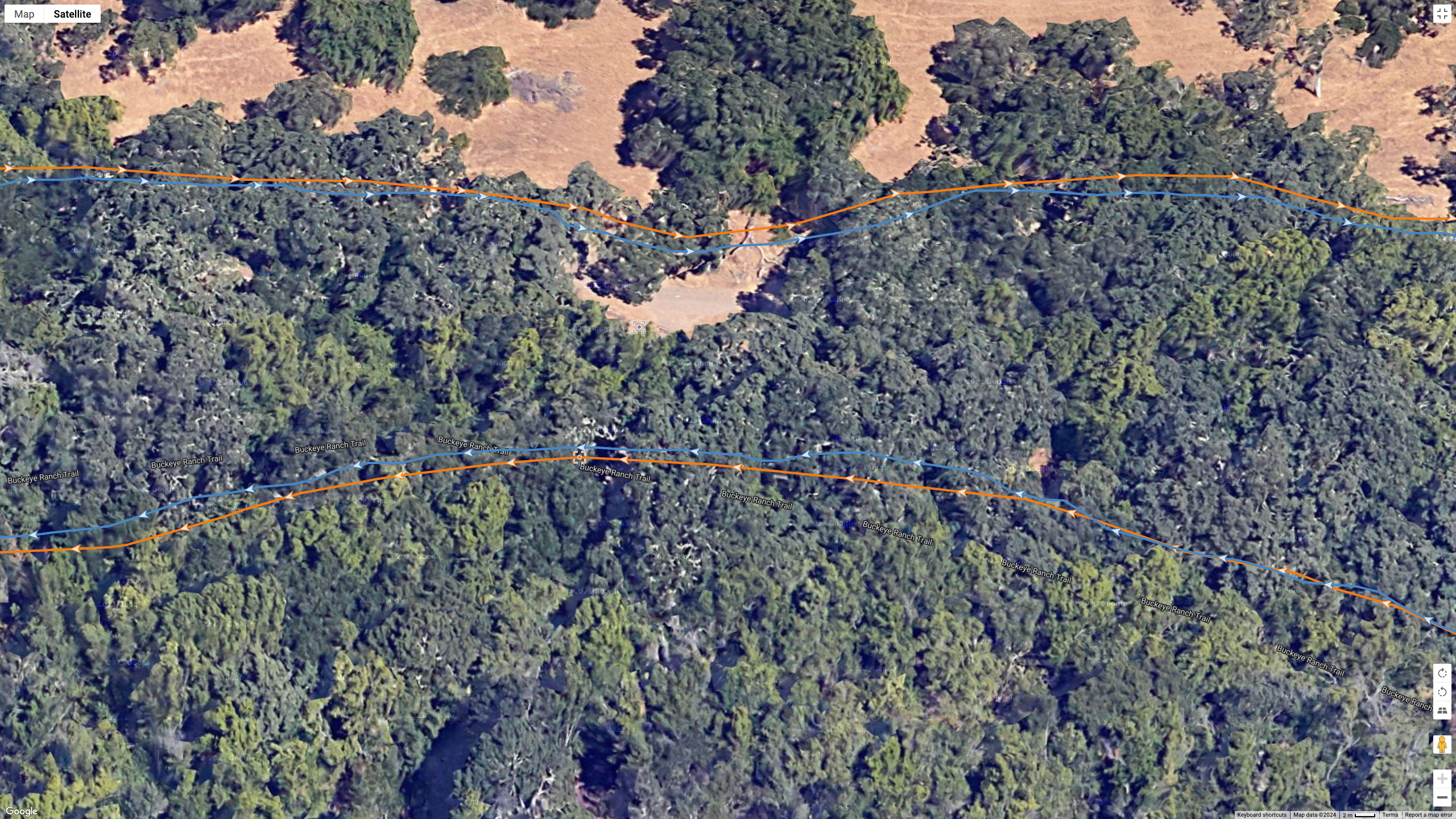
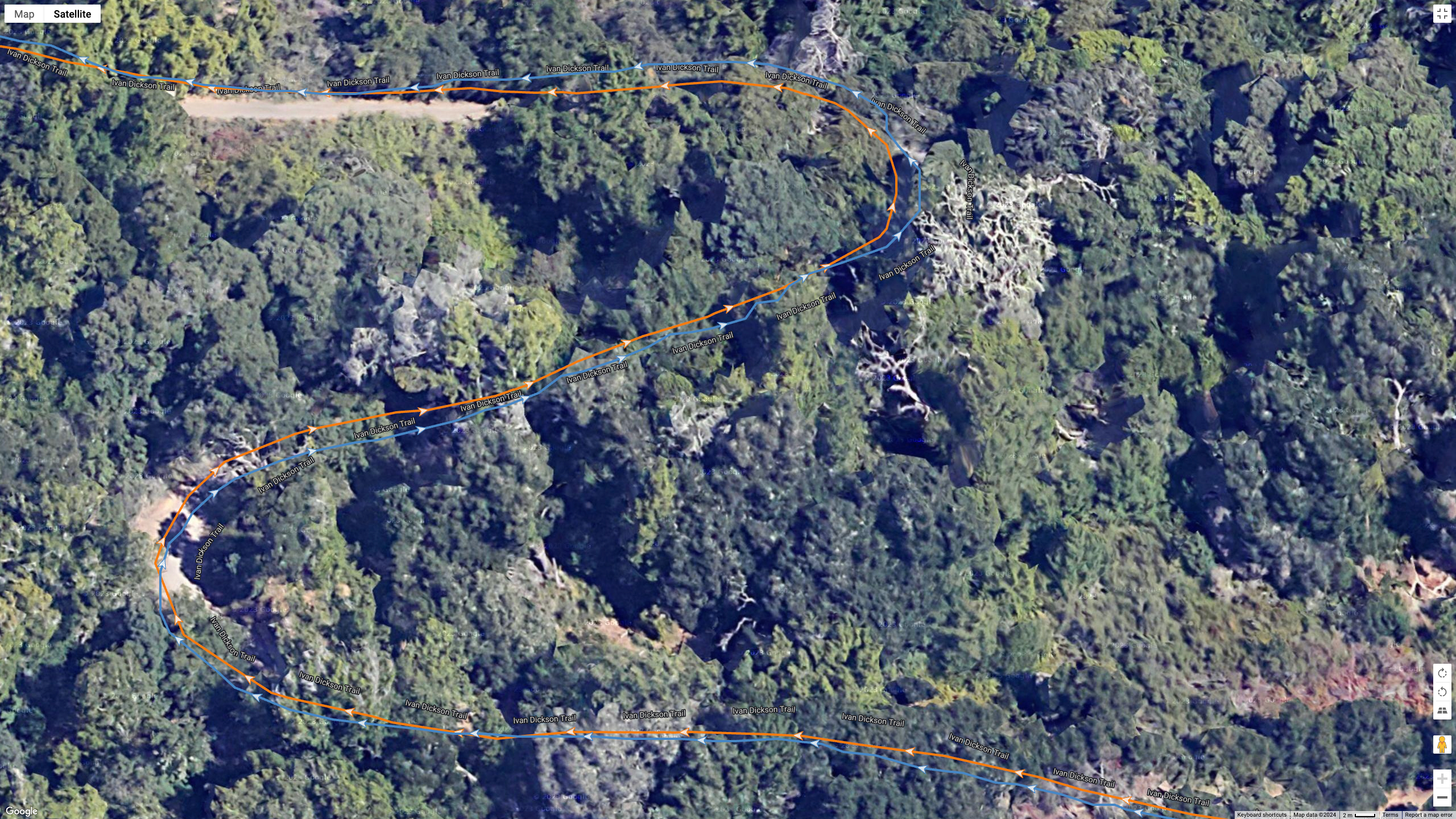
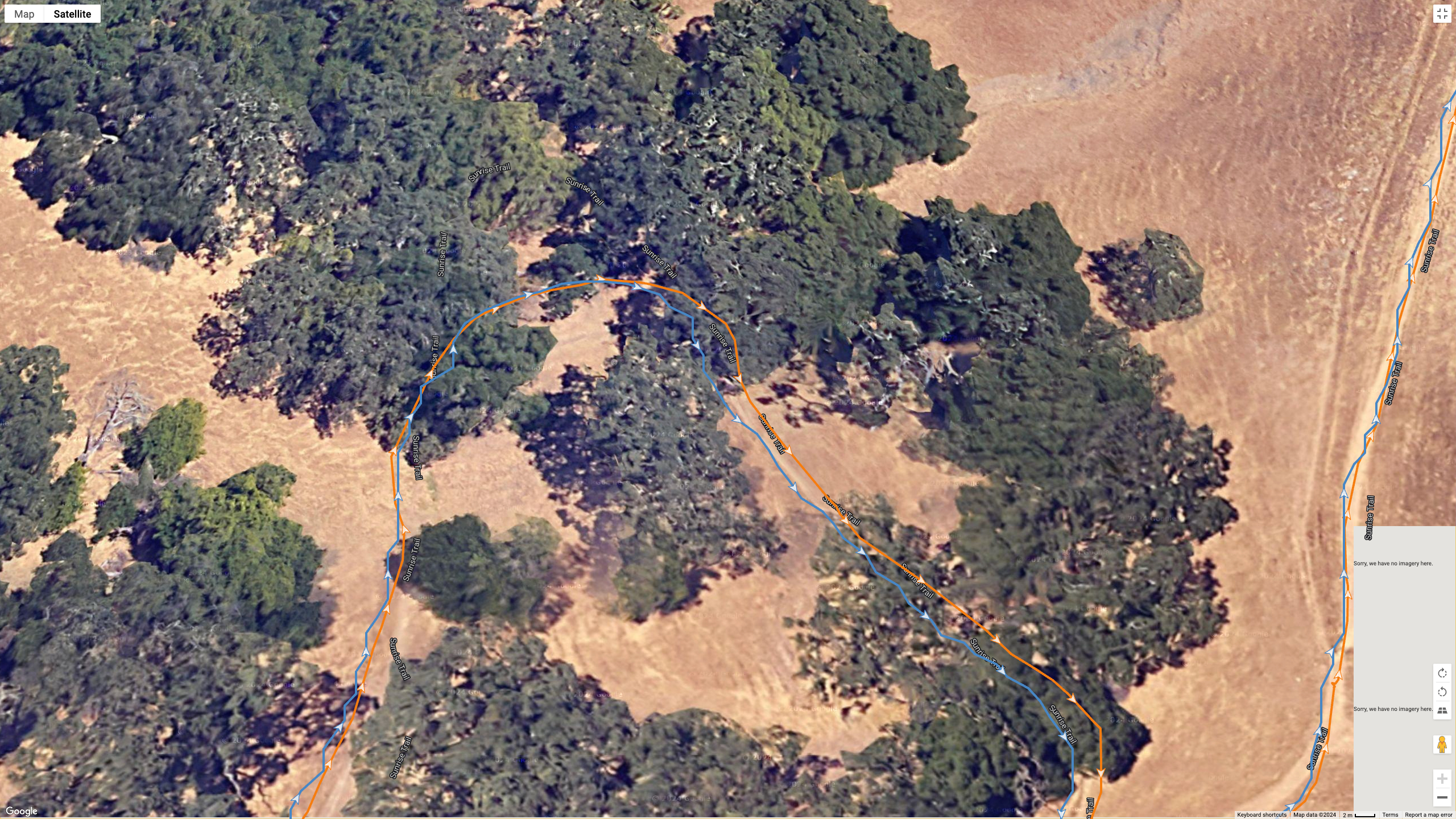
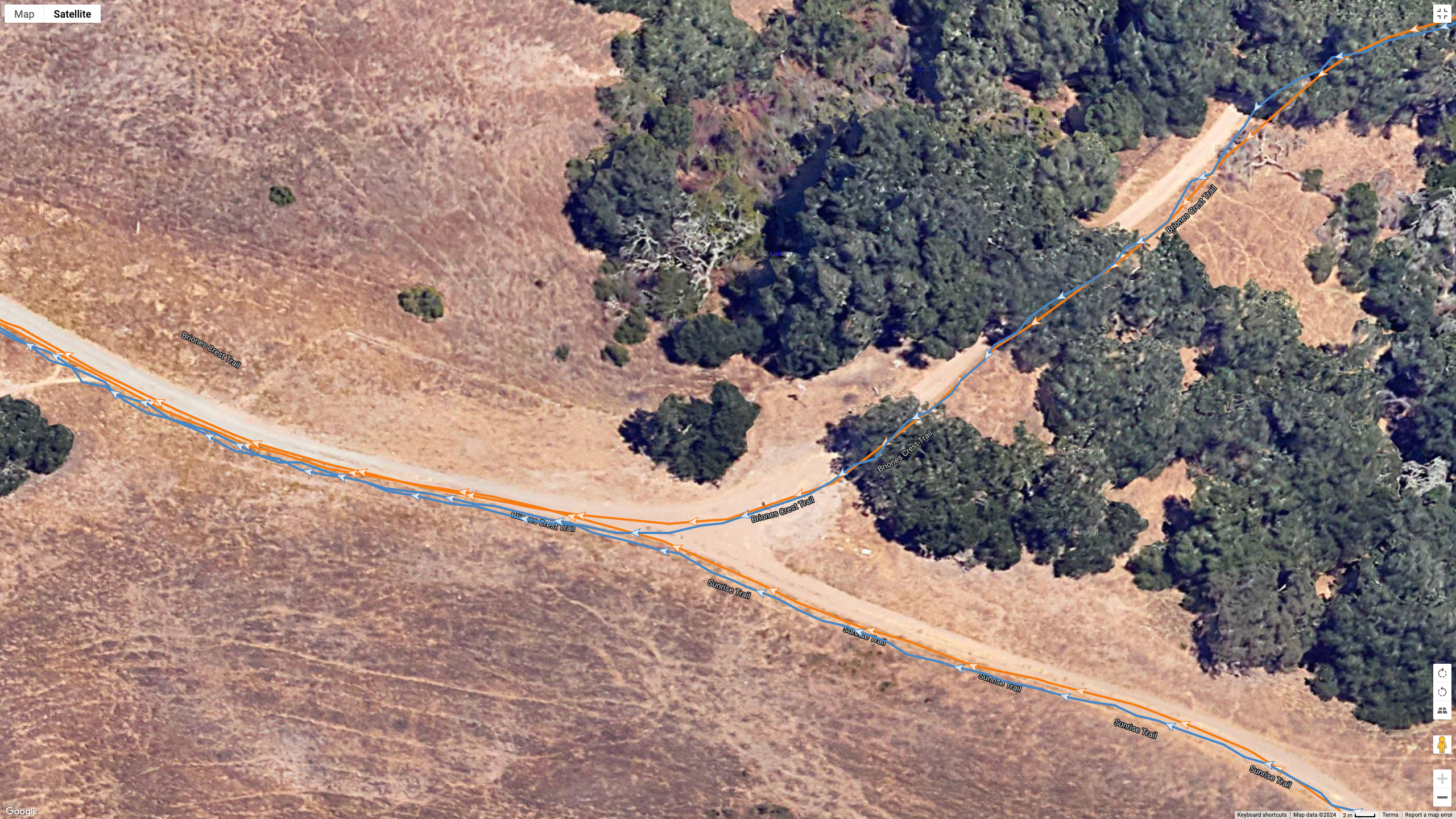
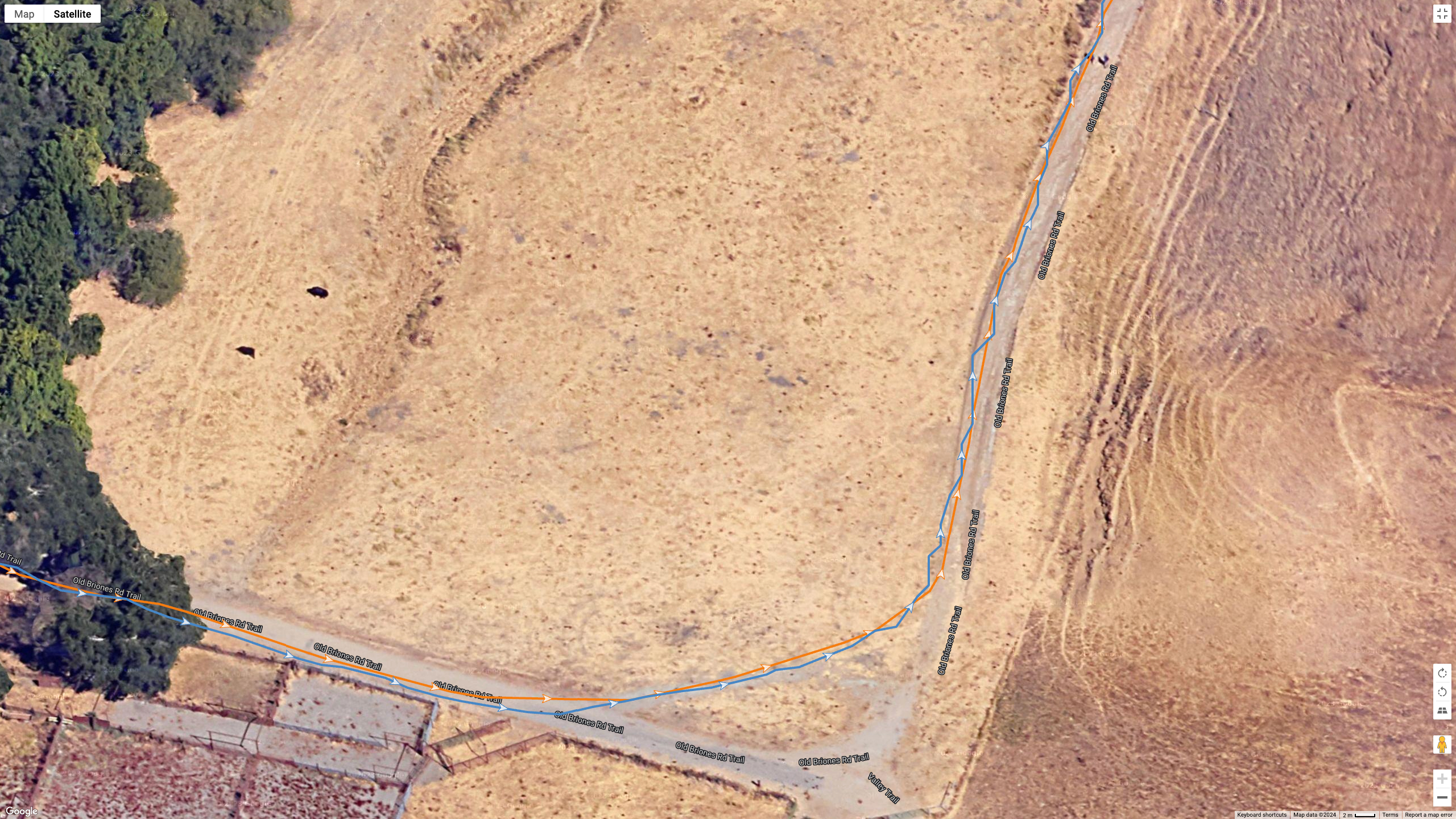
I also took both watches out on a ten-mile hike; by the end, Suunto had added two-tenths of a mile. You can see in the screens above how well it does tracking me in dense foliage, never losing me the way most smartwatches would. But whether my signal is obscured or direct, you see that same frantic zig-zagging effect at random moments.
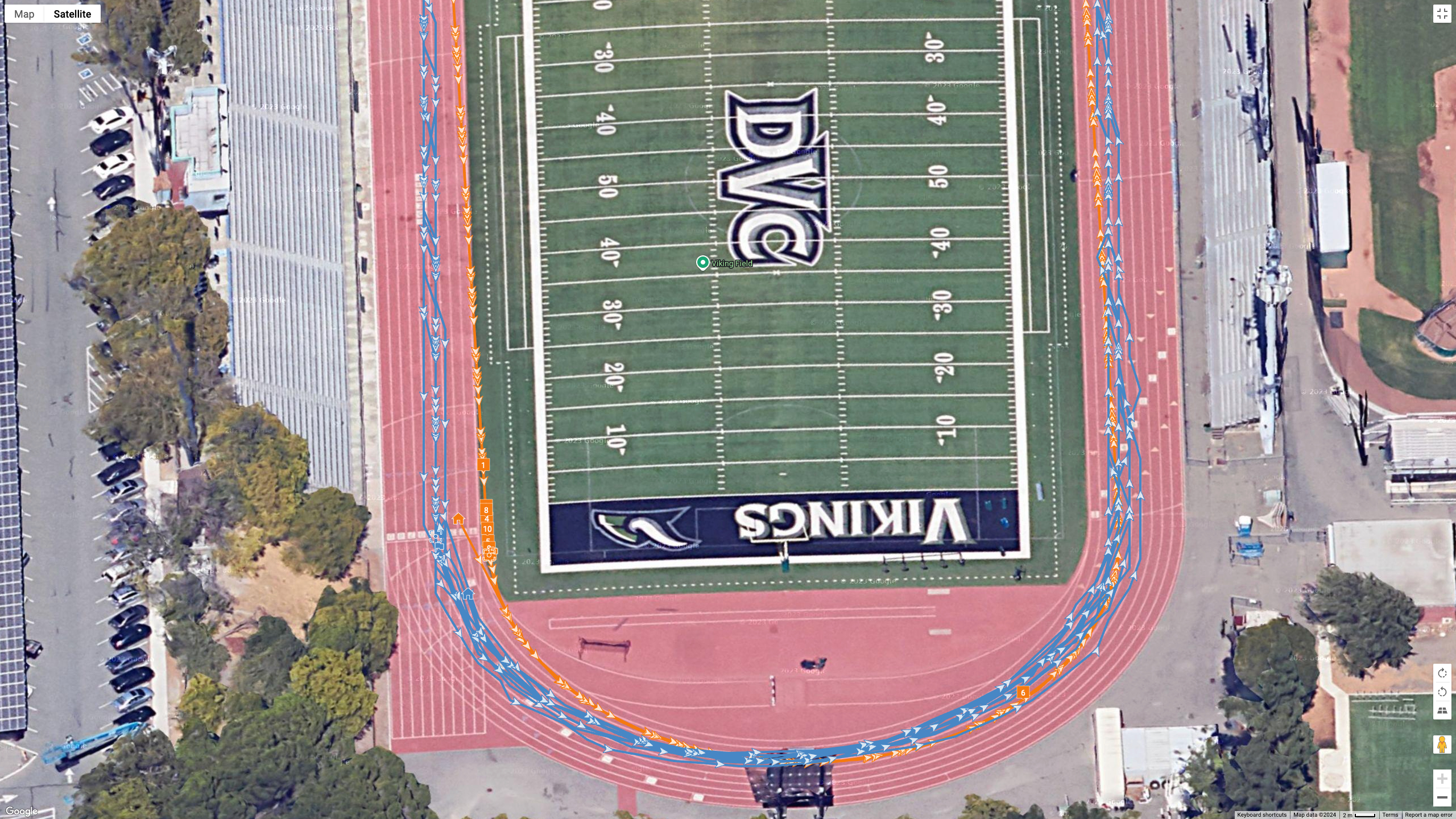
The Suunto Race doesn't have a track run activity, but it did pretty well at matching my lane-3 sprints around my local track, despite some wobbliness. It ended up adding about 80m to my total after ten laps. (Garmin's track line is artificially centered because of its Track Run activity, so ignore it.)
This watch is old enough that Suunto is probably past the point of algorithm fixes, but I feel like Suunto is close to nailing its tracking, in some ways better than other dual-band watches at avoiding straying lines.
Suunto Race HR accuracy tests
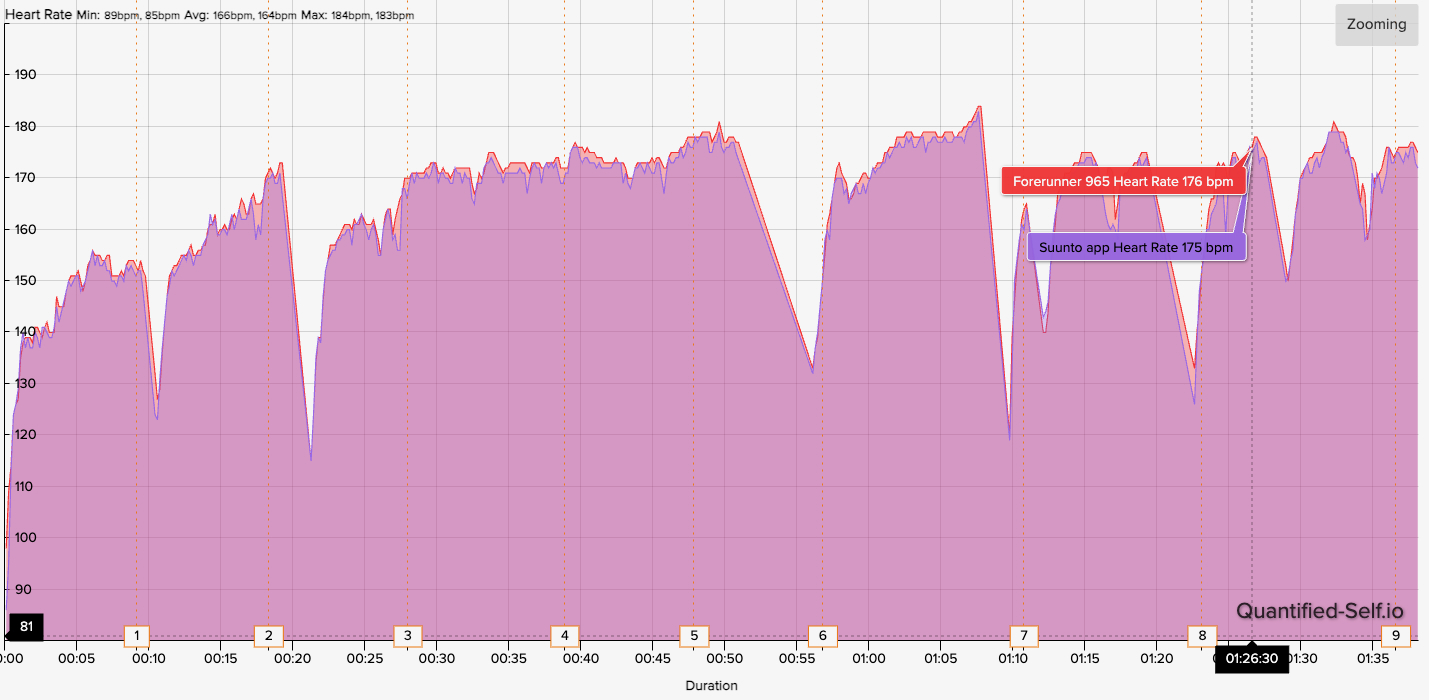
With the Suunto Race's optical heart rate monitor, I'd already heard that Suunto doubled the LED sensors in its Race S successor watch and tweaked its algorithm in response to Race HR criticism. So I compared it against my COROS Heart Rate Monitor to see how it matches against a reliable optical sensor (the above chart says "Garmin Forerunner" because my COROS synced to that watch).
For all four activities, the Suunto's HR average fell 1–2 bpm short. During the 15K run above, the Race always stays close, but it's apparent how its reading never quite catches up to my actual heart rate, averaging 2 bpm short (166 vs. 164).
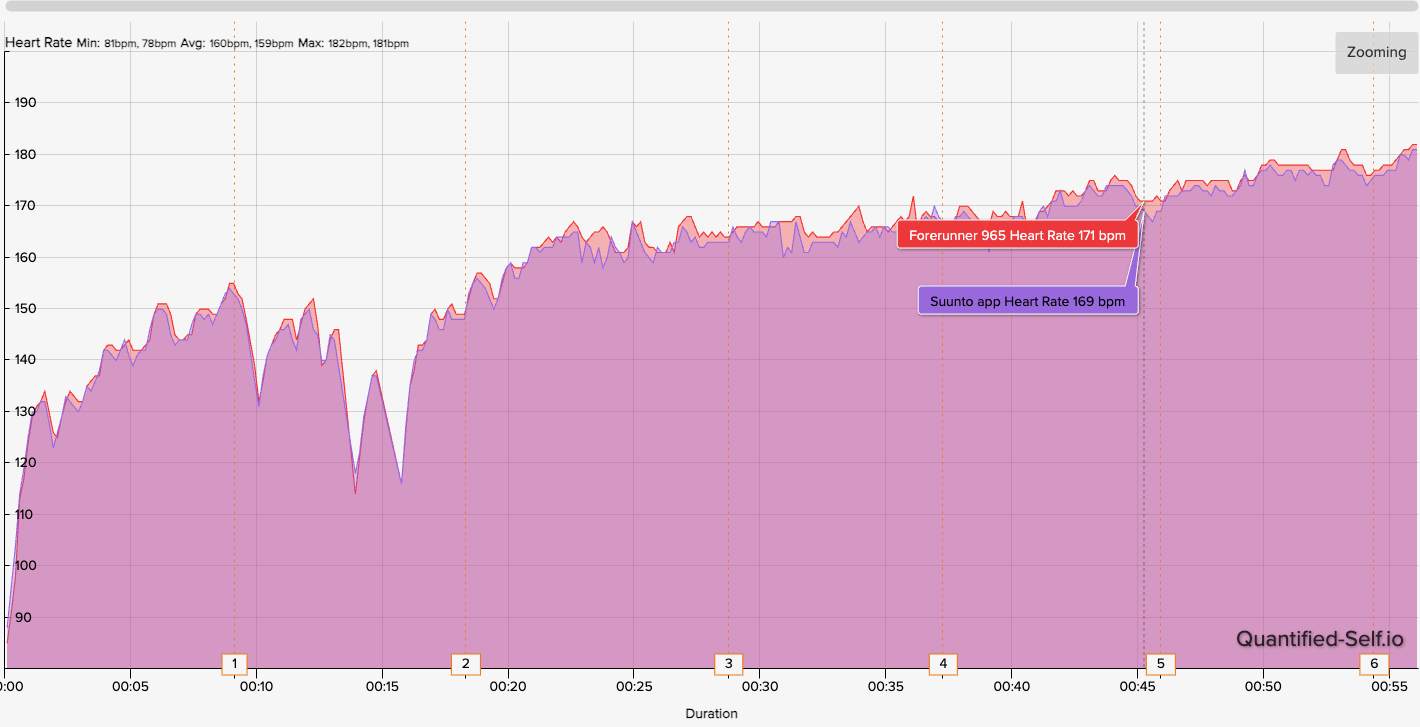
During a shorter 10K, the gap was only 1 bpm, but the shorter timeline makes it easier to see moments where Suunto's reading dips and rises at odd increments while the secured COROS band has my heart rate staying steady. That has me suspecting that the Suunto Race does have small tracking blips that add up, and that the Race S' extra LEDs might help with that.
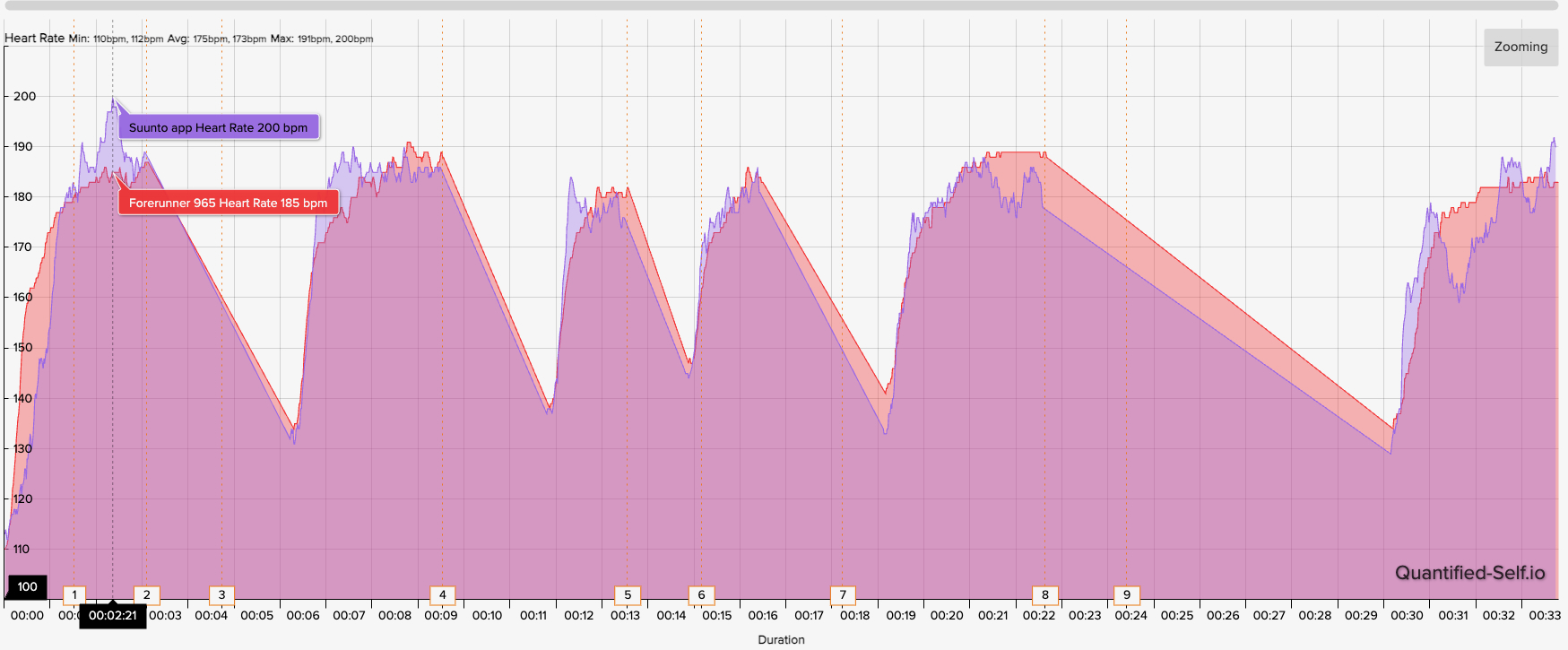
For my final track workout, the Suunto Race struggled. Some gaps might be due to inconsistent pausing after laps, but that doesn't explain the Race registering me at my max 200 bpm during my first 800m; trust me, I wasn't running that hard yet. Otherwise, there were two clear moments where its HR was ten bpm above my actual rate, and two moments where it was ten bpm below. The overall average was just 2 bpm off, but I wasn't thrilled with the data.
Overall, I'd say the Suunto Race's GPS accuracy is good enough to get by and better than whatever GPS-only watch you currently have, but it could be better. As for heart rate, this is a watch where I'd probably recommend you keep wearing an external heart rate monitor if you need hyper-accurate results, but it's otherwise good enough to give you accurate HR zones for your training load data.
Suunto Race review: What you won't like
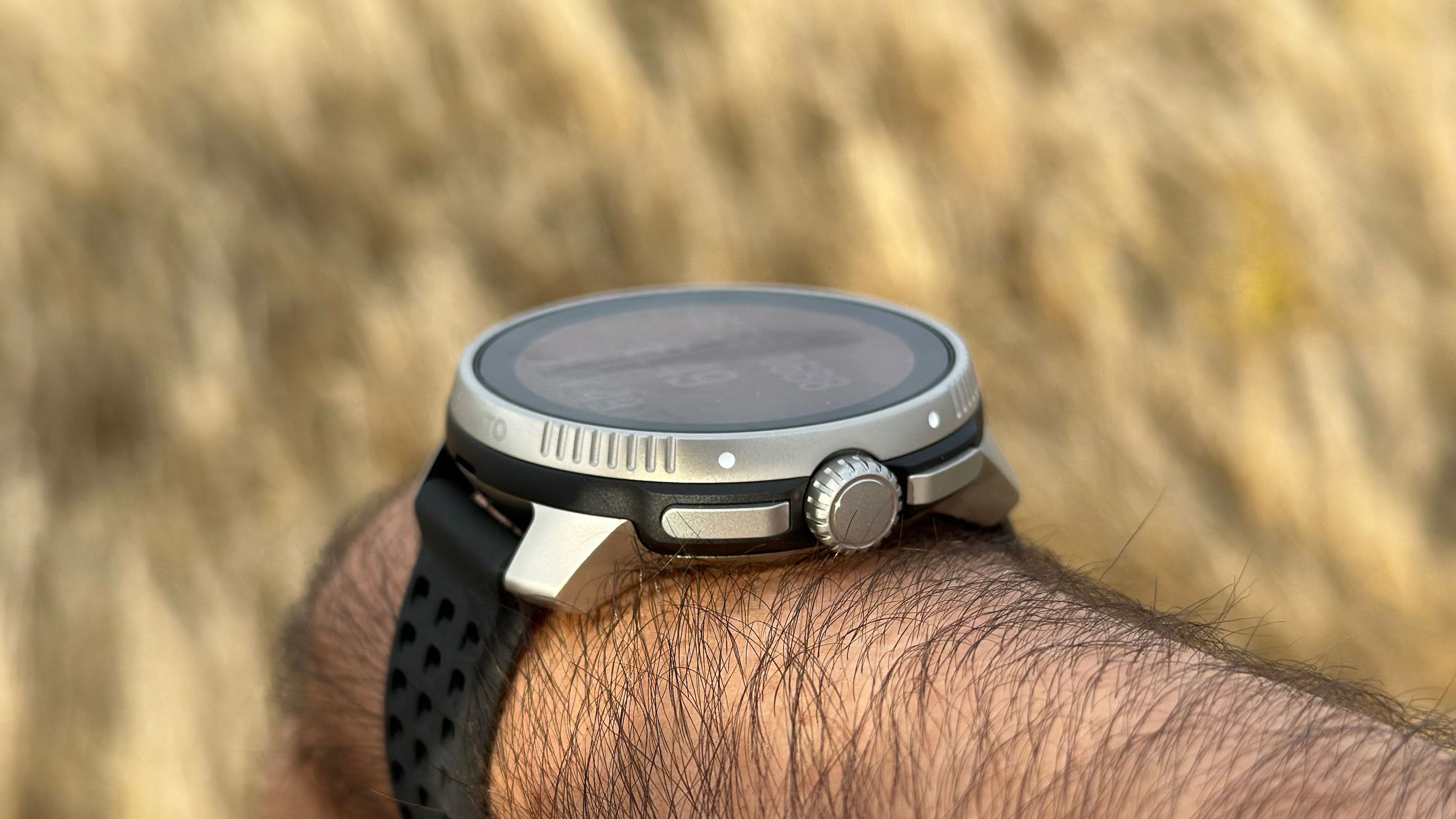
Aside from my complaints about accuracy, my biggest note with the Suunto Race is its weight. Suunto sent me the titanium model, and at 69g, it's on the heavy side for a running-focused watch; most other flagships weigh in the mid-50s with a silicone band, or use a nylon band to hit that range. I feel a little bit of wobble when pumping my arms hard, though it's still not as heavy as, say, a Samsung or Apple Ultra watch.
My issue is that most buyers will choose the 83g stainless steel Race to save money. For people used to all-steel watches, they won't mind, but many runners will find that weight onerous. That's why many runners will prefer the 60g Race S, accepting the smaller and less-protected display.
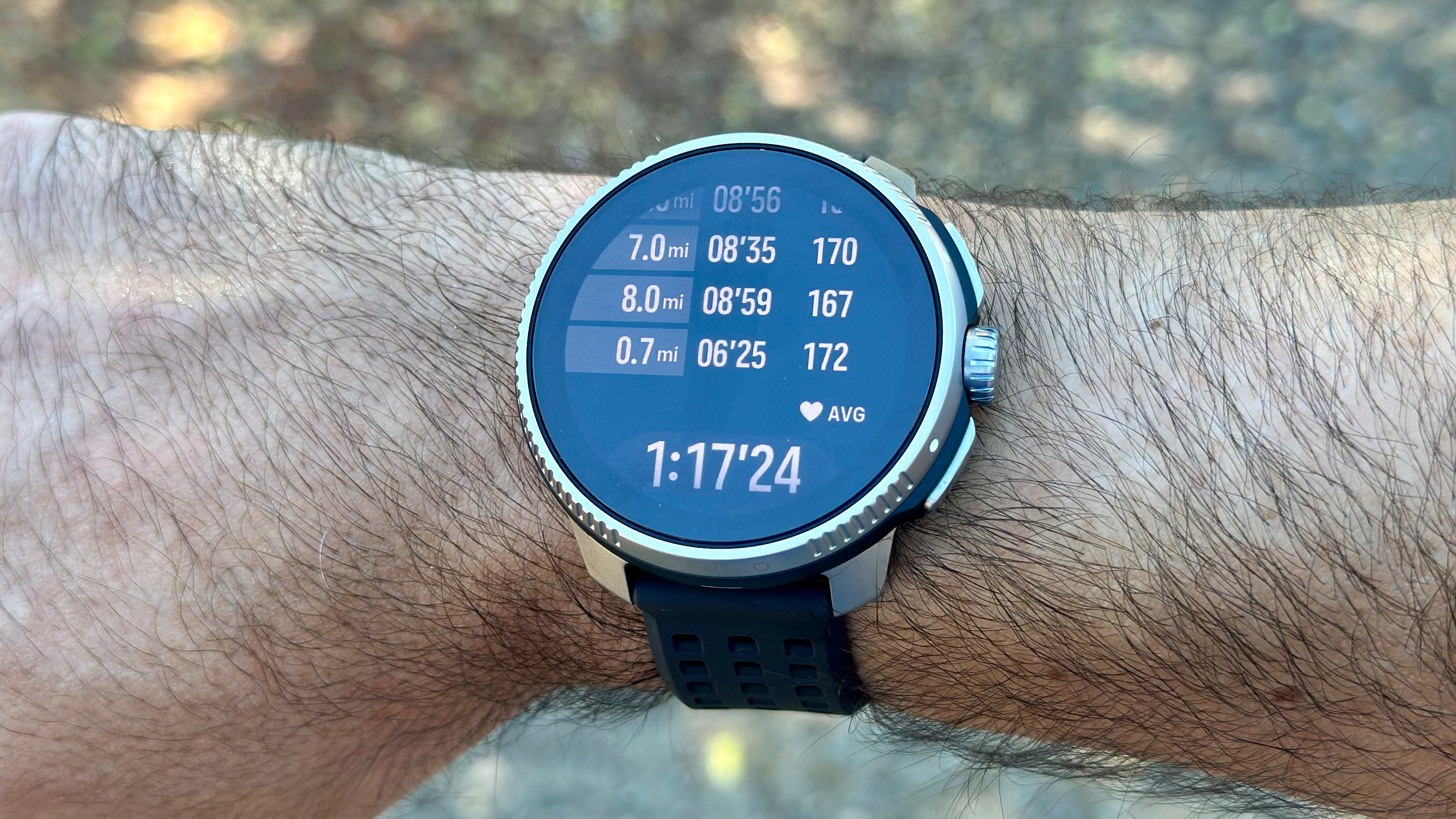
While I never mind running with my phone, the Suunto Race mandates it if you want music playlists or contactless payments. Some of this is outside of Suunto's control — it's hard for smaller brands to get banks and streaming services to play ball — yet many runners will choose other brands because they can't do without music storage and NFC.
While I praised most of the main Suunto app tools, one conspicuous absence is any kind of free training plan software that adapts to your recent workouts, like you get with Garmin or COROS. Suunto has a list of SuuntoPlus app integrations for training guides, but most of them (like TrainingPeaks) require a payment or syncing your data regularly with another platform. I'd argue Suunto needs its own native equivalent.
As for other missing features other fitness brands offer, Suunto doesn't have safety tools like location sharing, challenges, gear tracking, or the option to pre-select multisport options. You won't find any ECG or skin temp readings, either.
Lastly, I'm not the biggest fan of Suunto's watch face system. You can only save nine to the watch, and they're hidden in the SuuntoPlus store with only 21 total options by my count, none of them especially pretty or creative. You can't add a custom background, most faces only let you add three complications at most, and syncing faces to the watch is weirdly slow.
Competition
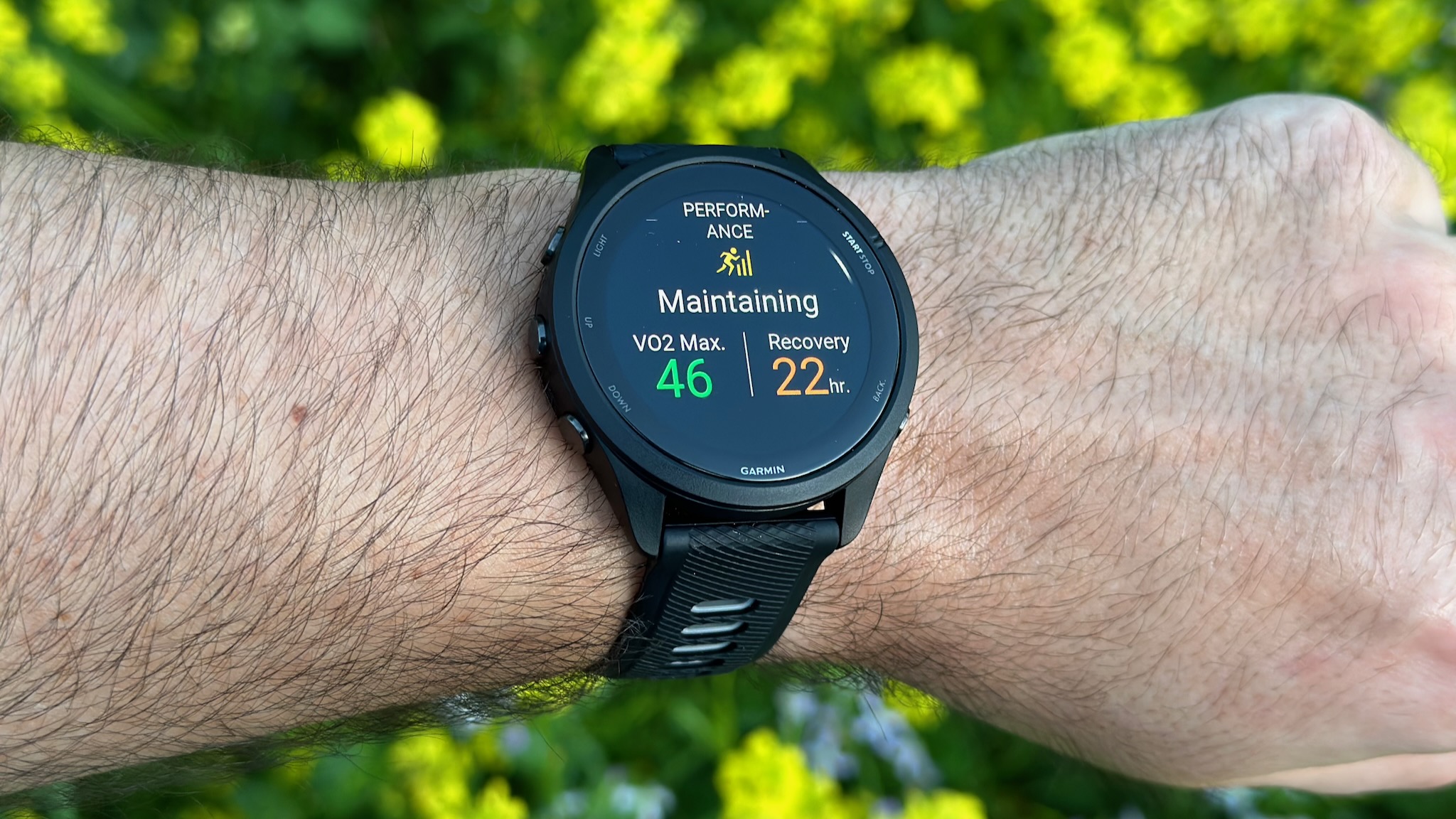
The Garmin Forerunner 265 is ranked as our best running watch because it offers great training tools without costing as much as flagship models. Compared to the Suunto Race, it has some deficiencies: its Gorilla Glass 3-protected display isn't as bright or scratch-proof. It only has breadcrumb navigation, with maps reserved for the 965. Its plastic bezel doesn't look nearly as classy. And while their daily battery isn't so different (16 vs. 13 days), the Suunto Race crushes the Forerunner 265 for dual-band GPS hours (40 vs. 14 hours).
Still, it has its perks! The Forerunner 265 is significantly lighter, even if you don't buy the smaller 265S, and it has the upside of contactless payments and music storage if you want to go phone-less for your run. It also does slightly better on the GPS accuracy front, and offers both daily suggested workouts and adaptable Garmin Coach training plans. Whether you prefer the up/down buttons or Suunto's crown is a matter of preference.
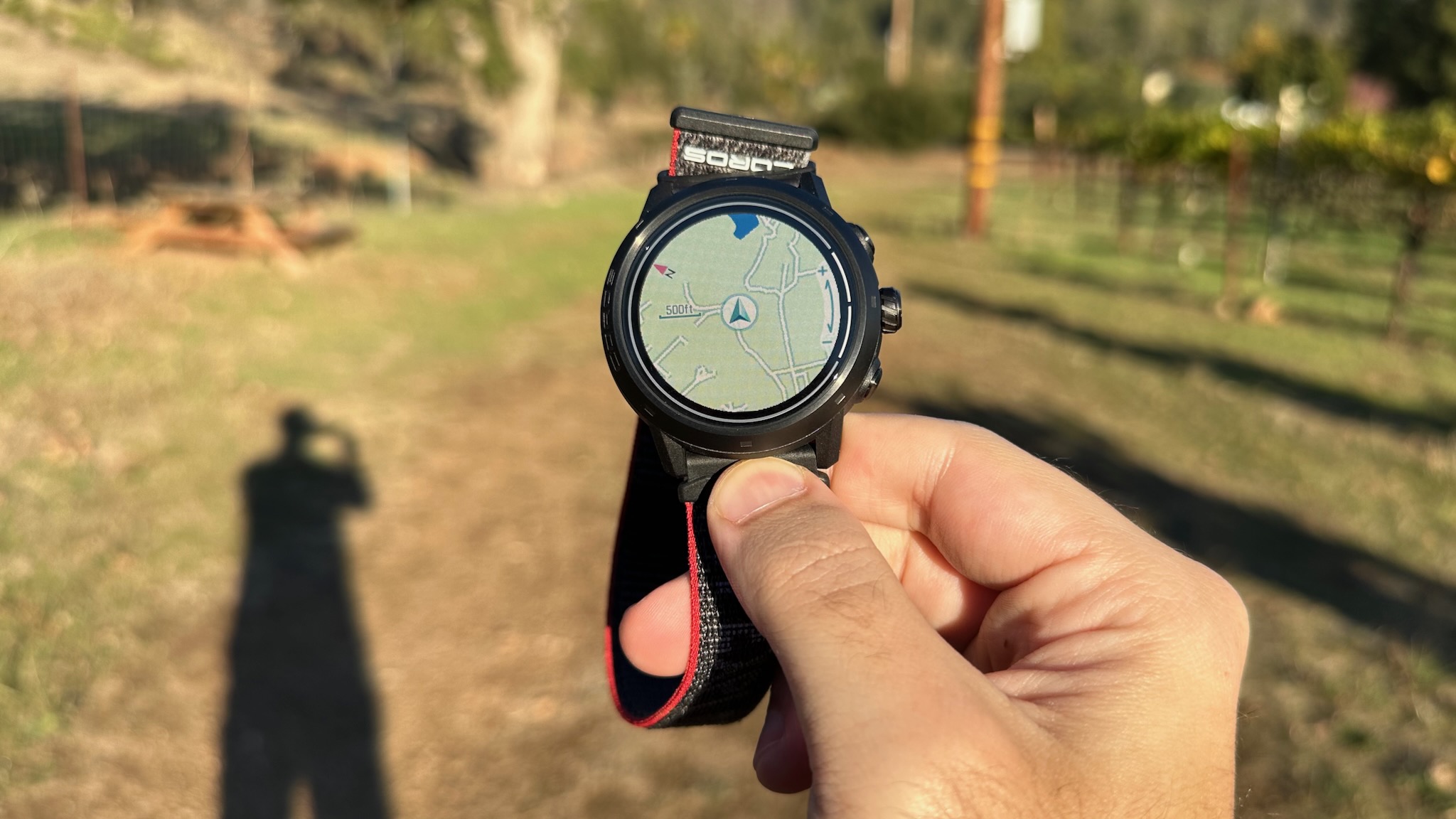
Aside from Garmin, Suunto's biggest fitness-watch rivals are COROS and Polar. The COROS APEX 2 Pro also costs $449, and thanks to its MIP display it can last 30 days per charge, though its 26-hour dual-band GPS tracking still falls short of Suunto's. It has a titanium bezel, ECG readings, 32GB for downloadable maps, comparable training load software, and downloadable training plans.
The Polar Vantage V3 is a pricier $599, making it a hard ask unless you're considering the titanium Suunto Race. It, too, has all the training guidance, recovery recs, accurate GPS and heart rate data, and full-color maps on an AMOLED display that you could ask for. I especially like its tests for things like muscle soreness and current VO2 Max.
Suunto Race review: Should you buy it?
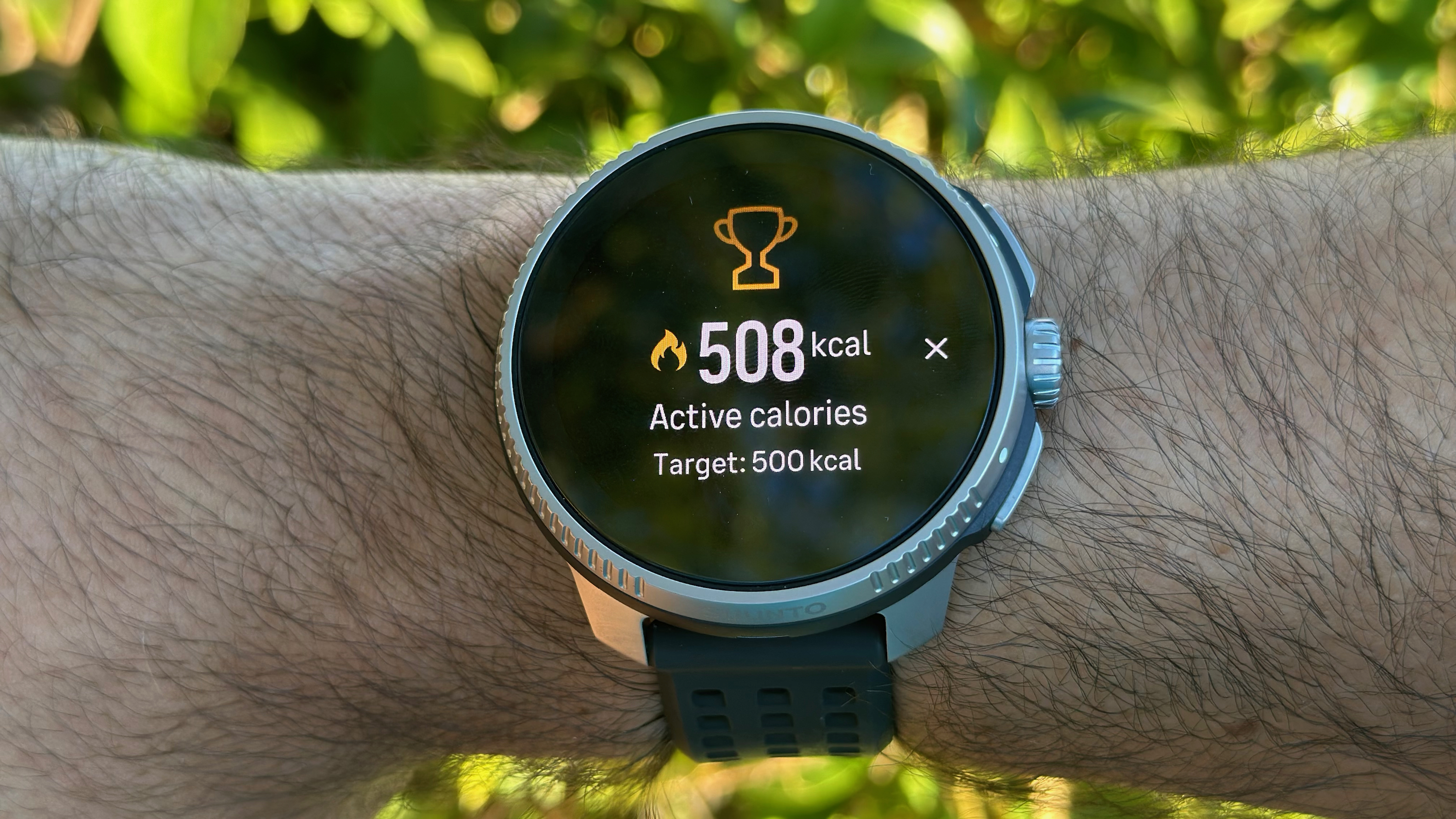
You should buy the Suunto Race if...
- You need a long-lived AMOLED running watch with in-depth training metrics.
- You want premium features at a mid-range running watch price.
- You want the Suunto Race's 10ATM water resistance, sapphire glass, and extra week of battery life compared to the Suunto Race S.
You shouldn't buy the Suunto Race if...
- The Suunto Race S, with its revamped HR data, lighter design, and lower price, appeals to you more.
- You need music storage or contactless payments.
- You want an adaptive training program that sends workouts to your wrist based on past activities.
My review title says it all: The Suunto Race is near the finish line for me.
The Suunto Race S allegedly fixed some of the optical HR issues and made it even more affordable and more comfortably lightweight. Once Suunto catches up on adaptive training plans and a couple of other areas, it'll have everything I'd want in a running watch at a lower price tier than other brands, like COROS except with AMOLED instead of MIP displays.
Still, as comparatively minor as the Suunto Race accuracy issues are compared to other mainstream smartwatches, they're big enough that I'll happily turn to other brands that avoid those issues.
Marathoner AMOLED
The Suunto Race arguably beats other $450 running watches like the Garmin Forerunner 265 and COROS APEX 2 Pro in key areas. It has a 16-day battery life, dual-band GPS, advanced training metrics, downloadable offline maps, and strong water and scratch protection.




